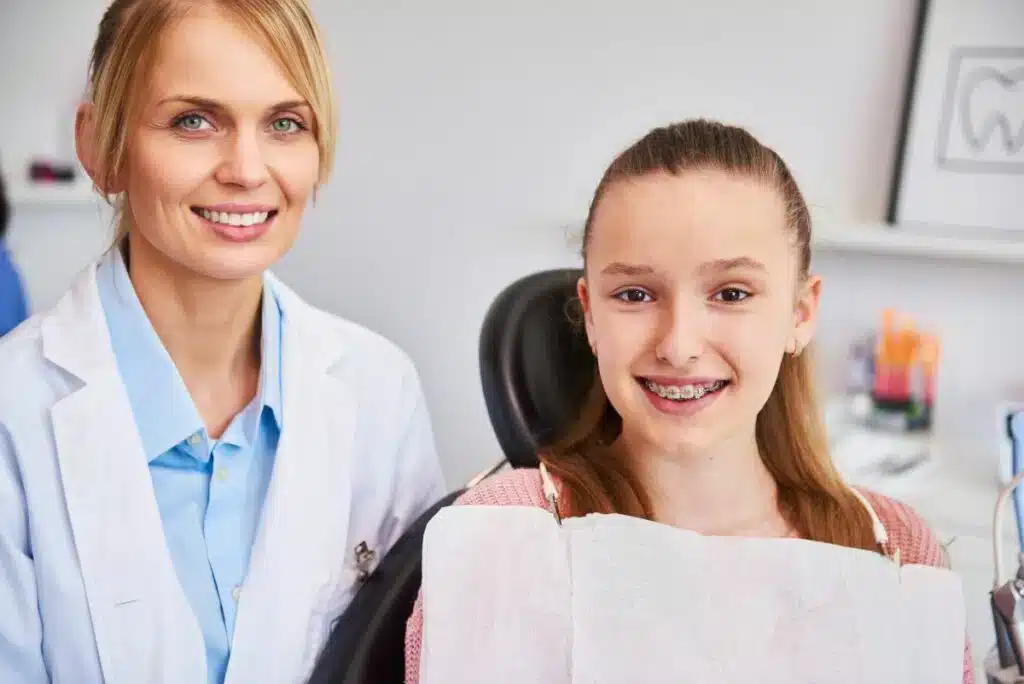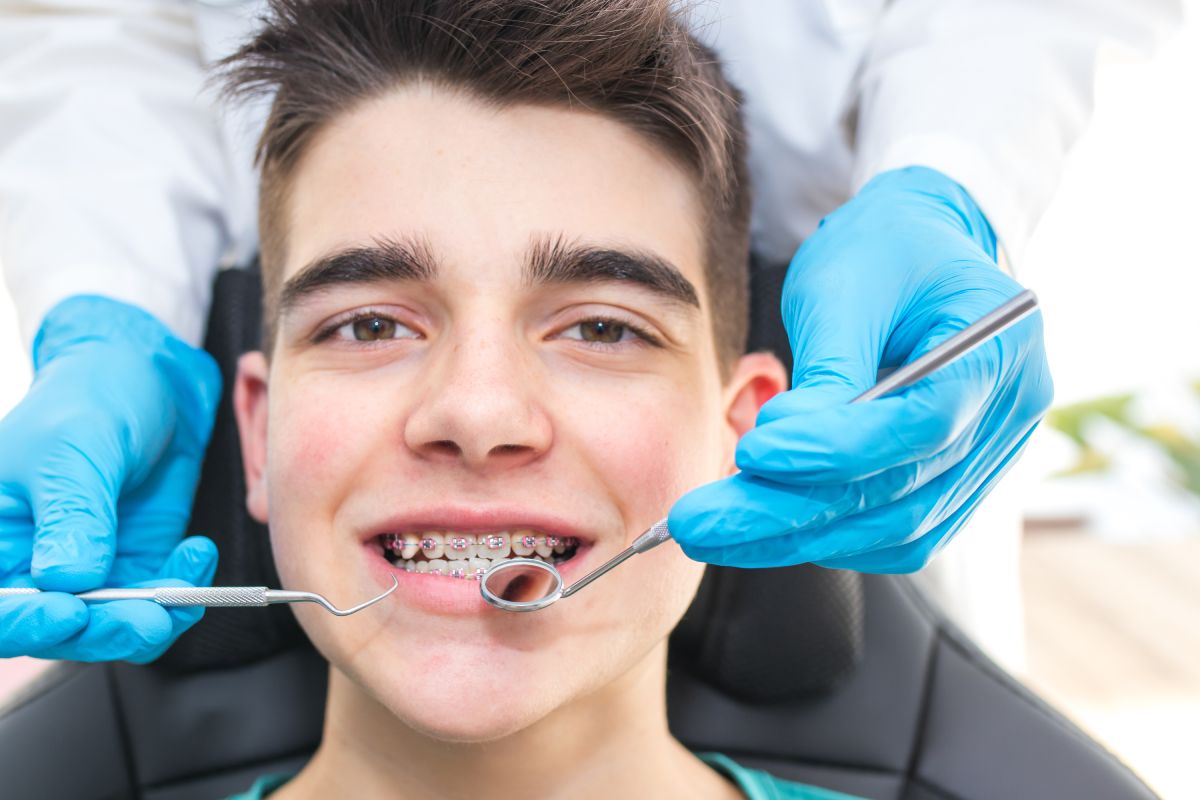What Does Causey Orthodontics Mean?
What Does Causey Orthodontics Mean?
Blog Article
5 Easy Facts About Causey Orthodontics Shown
Table of ContentsA Biased View of Causey OrthodonticsThe smart Trick of Causey Orthodontics That Nobody is DiscussingThe Single Strategy To Use For Causey OrthodonticsThe Buzz on Causey OrthodonticsHow Causey Orthodontics can Save You Time, Stress, and Money.
Overlooking occlusal partnerships, it was common to remove teeth for a range of dental issues, such as malalignment or congestion. The idea of an undamaged dentition was not widely valued in those days, making bite connections appear pointless. In the late 1800s, the concept of occlusion was important for producing dependable prosthetic substitute teeth.As these ideas of prosthetic occlusion proceeded, it became a vital device for dental care. It remained in 1890 that the work and influence of Dr. Edwards H. Angle began to be really felt, with his payment to modern orthodontics specifically noteworthy. At first concentrated on prosthodontics, he educated in Pennsylvania and Minnesota before guiding his focus towards oral occlusion and the treatments needed to keep it as a normal condition, hence becoming referred to as the "papa of modern orthodontics".

The idea of perfect occlusion, as postulated by Angle and integrated right into a category system, made it possible for a shift in the direction of treating malocclusion, which is any kind of deviation from regular occlusion. Having a complete set of teeth on both arcs was extremely sought after in orthodontic treatment due to the demand for precise relationships between them.
What Does Causey Orthodontics Do?
As occlusion came to be the essential top priority, facial proportions and appearances were ignored - orthodontist expert. To attain optimal occlusals without making use of external pressures, Angle proposed that having perfect occlusion was the finest means to gain optimal face aesthetics. With the death of time, it became fairly obvious that also an outstanding occlusion was not ideal when considered from an aesthetic factor of sight
Charles Tweed in America and Raymond Begg in Australia (that both researched under Angle) re-introduced dental care removal into orthodontics during the 1940s and 1950s so they might boost face esthetics while likewise making sure better security worrying occlusal connections. In the postwar period, cephalometric radiography started to be utilized by orthodontists for determining modifications in tooth and jaw setting triggered by growth and treatment. It became apparent that orthodontic therapy can readjust mandibular growth, bring about the development of functional jaw orthopedics in Europe and extraoral pressure actions in the United States. These days, both functional appliances and extraoral tools are applied around the globe with the aim of amending development patterns and types. As a result, going after true, or a minimum of improved, jaw relationships had come to be the primary purpose of therapy by the mid-20th century.
Unknown Facts About Causey Orthodontics
 Up until the mid-1970s, dental braces were made by covering steel around each tooth. https://www.localoffers.direct/united-states/gainesville/health-medical/causey-orthodontics-33679., it came to be possible to instead bond metal brackets to the teeth.
Up until the mid-1970s, dental braces were made by covering steel around each tooth. https://www.localoffers.direct/united-states/gainesville/health-medical/causey-orthodontics-33679., it came to be possible to instead bond metal brackets to the teeth.Andrews offered an insightful definition of the excellent occlusion in irreversible teeth. This has had meaningful impacts on orthodontic therapies that are carried out regularly, and these are: 1. Appropriate interarchal connections 2. Right crown angulation (idea) 3. Correct crown inclination (torque) 4. No rotations 5. Tight contact factors 6. Apartment Contour of Spee (0.02.5 mm), and based upon these principles, he uncovered a therapy system called the straight-wire device system, or the pre-adjusted edgewise system.
The advantage of the design depends on its brace and archwire mix, which needs just very little wire bending from the orthodontist or medical professional (orthodontist near me). It's appropriately named hereafter function: the angle of the port and thickness of the brace base inevitably establish where each tooth is positioned with little requirement for extra adjustment
3 Simple Techniques For Causey Orthodontics
Both of these systems employed the same brackets for each and every tooth and required the bending of an archwire in 3 planes for finding teeth in their desired settings, with these bends determining best placements. When it involves orthodontic appliances, they are separated into two kinds: removable and taken care of. Removable home appliances can be tackled and off by the client as called for.

Therefore, nearly all modern set home appliances can be considered variants on this edgewise home appliance system. Early 20th-century orthodontist Edward Angle made a significant contribution to the globe of dental care. He created 4 unique appliance systems that have actually been utilized as the basis for numerous orthodontic treatments today, barring a couple of exceptions.
Not known Facts About Causey Orthodontics

The cord finished in a thread, and to relocate it ahead, a flexible nut was utilized, which enabled a boost in area. By ligation, each specific tooth was affixed to this expansive archwire (emergency orthodontist near me). Due to its minimal variety of movement, Angle was not able to attain exact tooth positioning with an E-arch
These tubes held a firm pin, which could be rearranged at each visit in order to relocate them in place. Referred to as the "bone-growing home appliance", this device was theorized to urge healthier bone development because of its possibility for transferring pressure directly to the origins. Implementing it confirmed problematic in fact.
Report this page